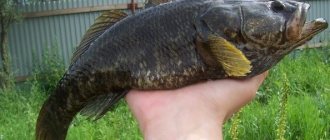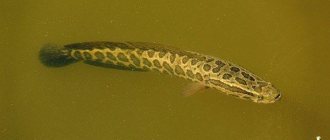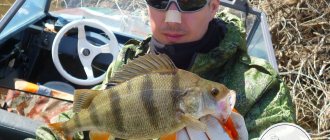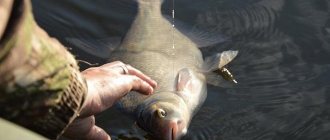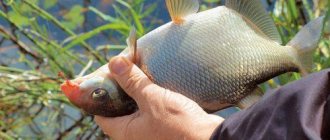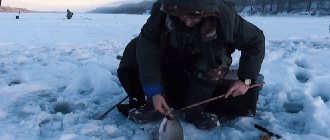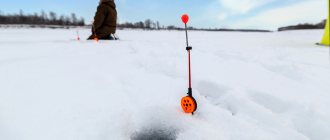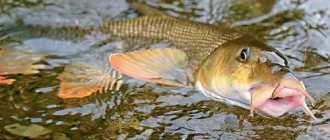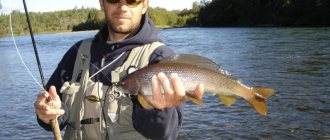Bream is one of the most anticipated trophies for fans of feeder fishing and other numerous types of fishing. However, in order to catch a truly large fish, it is necessary to take into account many important factors: features of the fishing location, time, attachments or bait, choice of bait, equipment of gear. Even for a fisherman who is not a highly professional fisherman, feeder gear turns into an effective fishing tool that allows you to experience the fight with very large fish and never be left without a catch in the hot summer month.
Peculiarities of bream behavior in July
Summer heat negatively affects the behavior of absolutely all types of fish in various bodies of water. During the daytime, their rhythm freezes, with rare exceptions, all activity is transferred to the night and morning, which determines the popularity of night fishing.
In July, small individuals of bream - bream - roam throughout the reservoir in small flocks, actively feed, do not go to the deep places of the river, reservoir or lake, staying close to the coastline and coastal vegetation. Large bream lead a completely different lifestyle, sticking to the deepest places during the day. Although there are exceptions to every rule.
July bream is indeed slightly unpredictable, and those who say that catching bream in the middle of summer is very easy are not entirely right. Rather, they are talking about catching bream, but in order to hunt for a truly trophy bream, the angler will have to take preparation very seriously: choosing a place for fishing, composition of groundbait, bait. The behavior of bream always depends on the conditions of the specific reservoirs in which this fish lives: depth, bottom topography, temperature conditions. It is these features that we will talk about.
Fishing in August
Bream fishing in August is not much different from July. The preferences of fish practically do not change, since most of this period is dominated by the same heat.

In August, bream prefers to stay in deep places with minimal current and a silty and clayey bottom.
The best time to catch bream in August is considered to be at night. After dusk and before dawn, as well as in bad weather, fish can approach the very shore of the reservoir.
You can catch bream in August using feeder gear. When choosing this method, it is recommended to use an asymmetrical loop as equipment.
Experienced fishermen find it the most effective. You can, of course, try other options, and perhaps you will find an even better one.
Although it’s good to catch bream on a feeder in August, you shouldn’t forget about float gear, which can give excellent results when the fish approaches the shore.
Be that as it may, fishing can be very productive if you prepare for it correctly. Then it will bring a good catch and a lot of pleasant sensations.
Features of bream tackle
If you want to catch bream on a feeder in the summer, you need to pay attention to the gear.
- The length of the rod should be about 3.30-4 meters. Its test depends on the weight of the feeder filled with food. On rivers it is somewhere around 70-140 grams, the average test is 90 grams.
- It is important that the feeder holds the bottom very well. When fishing on lakes and reservoirs, feeders can be placed smaller, since the need to hold it in the current disappears. Feeders for fishing on the river: triangular, rectangular, closed type is better when using fine-grained bait. When using large fractions - open. They are more stable in the current. For fishing on the lake, you can use various forms of feeders, regardless of their weight.
- The reel for the feeder is selected 2500-3000 units with a metal spool; the clutch must be working, no matter whether it is rear or front. A baitrunner will most likely not be useful for such fishing, but you shouldn’t write it off right away - anything can happen.
- You need to choose a fishing line or braid that is as strong as possible and at the same time thin. For the main fishing line, it is better to take a 0.12 cord, a leash - a 0.14 mm monofilament. This balance is due to the caution of bream in summer. At the end of the braid, it is necessary to use a shock leader (0.26-0.27 mm) made of fluorocarbon.
- Hooks must be durable and of very high quality. Numbers 9-14 will do. The size of the hook directly depends on the type of bait. The best hooks are now considered to be products from the Ovner company.
- The feeder must be equipped with at least three replaceable tips, adapted for the use of feeders of different weights, for places with different flow intensities.
When fishing for bream, all main types of installation of feeder equipment are suitable. The most commonly used are paternoster and asymmetrical loop.
Where to look for bream in summer?
The water level drops in summer. Bream can no longer be found near the shore during the day. It feeds near its permanent residence.
Fish can be found in calm water, near the bottom in deep pools, in shallows far from the shore with sharp transitions into holes and bays with clay or silty soil, in whirlpools, near steep banks, near thickets of water lilies or on the border of reeds and reeds.
When searching for a fishing spot, examine the coastal vegetation and riverbed. It is also useful to take a walk in the evening and in the morning to notice the “play” of the fish (a splash of water, and before that the appearance of the head, dorsal fin, and, finally, its tail), the appearance of bubbles at the feeding site of the bream.
The most effective attachments
Fishing baits are varied. In summer, bream is completely omnivorous. Both animal baits and plant baits are used.
Among the baits, the most popular are maggots, bloodworms, worms, and barley shells.
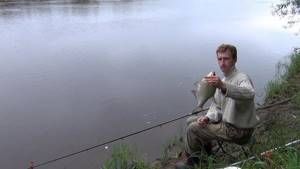
It is worth switching to vegetable baits (porridge, pasta, corn, peas, bread and dough), making sure that the bream completely ignores the animals.
When going fishing, it is advisable to take as many different baits as possible with you: it is very difficult to guess which of them will work in advance. There are often cases when bream begins to peck at baits that are not intended for fishing at all. The use of sandwiches made up of several baits has proven to be very effective.
Victoria Leshchenko
I've been working hard in the fishing tackle department for the past six years. I can help you assemble almost any gear.
Ask a Question
Bream is very fond of natural and artificial aromatic additives (dill, garlic, cake). Many fishermen actively use various artificial baits, for example, foam balls and boilies.
Habitats of July bream
Midsummer is the hottest time of the year, so the fish tries to find cooler places with sufficient oxygen levels. At such times, bream usually settles in secluded places and is reluctant to respond to baits and baits. If at the beginning of July bream hunting can be more successful, then from the second half the fisherman will have to put all his knowledge into practice to catch this fish.
- Hiding from the heat, the bream goes into the depths, and only occasionally leaves the pits at feeding moments. If we are talking about specific types of reservoirs, then:
- On large rivers, you should look for fish in deep areas with a slow current, and the bottom surface should be hard and covered with sand or sand combined with pebbles. Usually such places are indicated by changes in the topography of the coast and bends in the bed of the reservoir;
- On small rivers, fishing for bream will be successful if you choose deep holes or pools for fishing in places with reed thickets and other vegetation;
- In areas of the reservoir that are shaded by tree crowns, fish can live at relatively shallow depths, next to underwater plants.
Bait is the key to a good bite
When fishing for bream in the middle of summer, bait often becomes the key to a good catch. If we summarize the experience of all fishermen, a whole book would not be enough to describe all the components of bait and the secrets used in its preparation. The specificity of bait largely depends on the activity of the fish and the characteristics of the reservoir. But there are also general principles in preparing July bait for catching this fish:
- For complementary feeding, you can use both purchased and self-prepared mixtures;
- It is advisable to add peas, corn and other large fractions to purchased small-fraction baits. This helps to cut off small things when fishing;
- It is recommended to weigh down the bait used with soil from the fishing spot, but you should not pack the feeder tightly. The food should come out easily, forming a feeding spot;
- The bait should contain light elements. It is believed that a light spot on the bottom attracts fish from afar. Some anglers use colored pasta;
- The addition of various attractant additives is widely used. The main thing is not to overdo it! Sweet smells (vanilla, strawberry, honey) really attract bream if they are sweet “in moderation”. The groundbait must contain the attachment or bait that will be used for fishing;
- It is advisable to feed heavily in the evening.
When to catch bream
In July, the best time for fishing will be in the morning, from about 4 o'clock to 8 o'clock. In the morning the water has cooled down enough, and the bream comes out of their holes to smaller feeding areas.
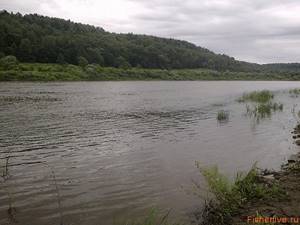
Fishing during the daytime is less effective. During the day, the bream stands in deep places and practically does not feed. During the daytime, only intense heat can awaken his appetite. During the day in hot weather, this fish will not refuse juicy maggots or pearl barley.
In the evening after sunset and at night the bite can be called average. At this time, bream are just beginning to leave their camp sites and feed reluctantly.
In general, it is very difficult to catch any fish in July. When the sun is shining it is very hot on the shore, and the gadflies do not allow you to relax. The rest of the time, mosquitoes and midges get into your eyes and bite, so keep this in mind when catching.
Fishing technique and tactics
Real bream fishing always begins with choosing a place. The basic principles for choosing a place for fishing on a river and on a lake are the same. It is imperative to carefully examine the bottom of the reservoir, its depth and topography. Silty areas on the river are unlikely to be suitable. It is desirable that there are anomalies at the bottom: differences in depth, edges, where the likelihood of bream staying is much greater. A marker weight and a float will help you in this matter.
Measuring the depth can be done with a regular feeder rod, on which a weight is installed instead of a feeder. By counting down the time until the load falls to the bottom, you can calculate the depth at the fishing spot. With each rotation of the coil, the time of its fall is recorded. If the load falls slower, the depth increases, and vice versa. This way you can determine the distance to the perspective point, which is clipped on the reel.
The features of the bottom are determined as follows: if the bottom is muddy or overgrown with algae, then when winding the reel, a light but uniform load is felt, and the resistance is minimal. If the bottom is covered with shell rock or stone, a tapping sensation is felt in your hand. If the resistance suddenly disappears, it means the load has fallen into the hole. The load moves smoothly along the sandy bottom without sudden changes in the applied force.
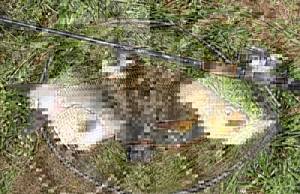
The initial feeding of the fishing point is carried out: only 5-10 casts with quick emptying of the feeder when the rod jerks. The bait for primary feeding should be finely dispersed and well moistened, so that it reaches the bottom and only then begins to be washed away by the current. The second layer is applied on top of the first. It already consists of a mixture of different fractions with the addition of bait, which will be used for fishing.
After feeding, the actual fishing begins. You need to start with a small leash (about 40 centimeters), then the length changes as necessary. If the leash is long and the bait is bitten or chewed by fish, it needs to be shortened. If there are no bites, lengthen it.
While the bream is interested in the bait, the tip of the feeder rod will remain motionless. The fish swallows the bait and calmly moves away to the side. At this time, the bite is reflected on the rod. You should always carefully monitor the tip, otherwise the moment of biting will be missed. It is worth remembering that bream have weak lips, so sharp hooking can lead to loss of catch.
Baits and groundbait
It is important, before you go fishing, to find out what to catch bream with and what to feed it with.

This type of fish is not picky about bait and eats almost all types of it. When fishing, you can safely take maggots, worms, bloodworms, bread, pearl barley, semolina, etc.
But to be sure that the bait is chosen correctly, you should find out from other fishermen who have experience in fishing in a particular body of water what bream prefers. Or you can take all types of attachments that you managed to get and go to the river fully armed.
It is worth noting that this species of inhabitants of the underwater world loves to feast on dishes from several different types of bait.
Bait for bream is also very important. Here it is necessary to take into account not only his preferences, but also other natural factors. The bait should be tasty and aromatic to attract more fish, but the main condition is that there should be a lot of it.
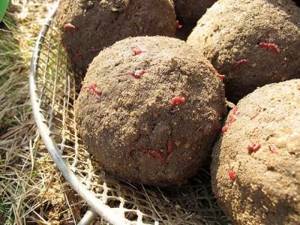
To keep the bream at the fishing spot longer, it is necessary that the mixture does not contain large particles with which it can quickly become saturated. The ideal option would be to sift it through a sieve.
The bait is sold in any specialized store. If you don’t want to spend extra money, then you can prepare it yourself, and it will turn out no worse than store-bought.
Fish loves to eat millet and peas, so they must be added to the mixture. Experienced fishermen advise preparing a mixture of breadcrumbs, ground biscuits, corn and oatmeal and wheat bran. The result is a good taste and aroma, as well as excellent consistency.
Mixing bait from different manufacturers also gives excellent results.
Under no circumstances should you rush while preparing the delicacy. It is necessary to mix the bait slowly, adding water to it in small portions. Otherwise, it can be over-moistened, which will not have a very good effect on the quality. The mixture should not spill out or pour out of the feeder. Its main purpose is to reach the bottom of the reservoir and wash out of the feeder, thereby creating a feeding spot.
If the river has a strong current, you can make the mixture heavier by adding black soil or clay. But before that, you should smell the weighting agent. If it smells musty, as it often does, it should not be added. This will scare the fish away.
What you need to know about bait
This fish has a good sense of smell, thanks to which bream is able to smell food at a distance of two hundred meters or more. Therefore, one of the important conditions for successful fishing is the correct choice of bait mixture. As the distance to the bait decreases to 100 m, the bream begins to navigate by hearing. This also needs to be taken into account and, if possible, keep silence, since, upon hearing excessive noise, potential prey may immediately leave. And at very close distances, the bream switches to a visual orientation, therefore, the color palette of the bait should also be taken into account.
When preparing the bait mixture, it is necessary to take into account how fast the river flows. It is important that the bait does not spread across the water under the influence of the current, but is concentrated in one place, which will allow it to hold the swimming fish. To achieve this, the bait mixture must contain grains of large fractions. But at the same time, in order to attract fish from long distances, the bait must contain small fractions that will spread downstream and attract a school of bream. To keep the bait in place, it must have a thick consistency, and to spread over long distances, you need to use a less viscous mixture.
The composition of the bait must include the bait that will be used in this case. If maggot is chosen for fishing, then it must be included in the mixture in chopped form. This also applies to other types of bait (worms and bloodworms). When using vegetable baits, the main component of the bait mixture can be green peas; you can also use pearl barley or other porridge.
If plant baits are used, then to fill the feeder you should choose peas, pearl barley porridge or corn kernels. But you should know that the presence of animal bait in the bait mixture has a beneficial effect on the effectiveness of the catch. Bream bait for fishing in mid-summer should contain flavorings. Sweet confectionery products are excellent for these purposes. Also, July bream enjoys spicy aromas and really likes the smell of millet porridge.
Ideally, the bait should be released from the feeder within 20-25 minutes, after which the feeder must be re-thrown. As a result of the release of bait, a trail is formed that attracts fish to the fishing site.
Types of feeder equipment
Below is a diagram of the gear for fishing on the feeder. Ready-made equipment can be purchased at almost any fishing store, and you can also make a structure for catching bream yourself.
Weak current - light tackle, less viscous bait, light feeder.
Fast current means rough tackle, heavy feeder and higher line strength. Complementary foods are dense and viscous.
There are many accessories suitable for the feeder; 3 of the most interesting options are discussed in detail below.
When fishing with a feeder, it is very important to select a feeder in accordance with the strength of the current. For example, large bream that live in the rivers of central Russia often come out to feed on fast currents.
In order for the feeder to stay in such a current, it must weigh from 50 to 250 grams. Since food is instantly washed out in a fast current, the mesh of the feeder should not have a too wide mesh.
If you use a feeder in the form of a spiral spring, then you need to pay attention to the pitch width of the turns. Of course, reliable fixation of food in the feeder can be achieved by using a viscous feed mixture.
However, excessively viscous bait often washes out unstably.
Sometimes it is necessary to fill a fine-mesh mesh with looser bait in order to achieve a stable feed train.
Some fishermen mount the equipment directly on the main line, making knots and limiting the movement of the feeder with a stopper. Other feeder hobbyists make ready-made elements at home, using different thicknesses of fishing line and making several types of rigs. Crimping tubes can be used instead of knots.
Anglers use several main types of feeder equipment.
- Paternoster (read more about how to make it). The most universal equipment used in feeder fishing is the paternoster.
- The Gardner loop, as the paternoster is also called, is easy to install. The sensitivity is somewhat inferior to the asymmetrical loop. The Gardner loop is considered the simplest feeder equipment. In skillful hands, you can make a paternoster in a minute. The simplest equipment is made on the main line using knots. Before tightening the knots, it is necessary to wet the line. First, a small loop is made at the end of the braid or monofilament. A leash with a hook and bait will be attached to it. From this loop you need to measure 10-15 cm and knit a second loop. It can be small or large, it all depends on how the angler prefers to mount the feeder. When the feeder is attached using the “loop-to-loop” method, a large element is required. If installation is carried out through a swivel and carabiner, then the loop may be small. Now all that remains is to attach the feeder and leash and the tackle is ready for use.
- Asymmetrical loop. It is distinguished by high sensitivity, and in strong currents it reduces twisting of the equipment and leash.
- Symmetrical loop. It is used in weak currents and in reservoirs with standing water. The loop system is manufactured separately and attached to the main line via a swivel with a latch. To knit an asymmetrical (non-symmetrical) loop, take a piece of fishing line 1 to 1.5 m long with a diameter of 0.2-0.4 mm. It is important that the fishing line is rigid, for example, fluorocarbon. The prepared piece of fishing line is folded in half, with one side made 10 cm longer than the other. Using a double or triple knot, a loop is made for mounting the leash. It is more difficult to make a retractable leash, which should be rigid and dense. Then the number of overlaps with the leash will be less.
- Helicopter. The equipment is a modernized paternoster. The feeder is mounted at the end of the main line, and the leash slides along it. Works well in currents with a weak bite. Helicopter installation is quick and easy. A stopper, a swivel with a carabiner for a leash, and a cambric are put on the line. A swivel with a clasp for the feeder is tied to the end of the fishing line. The cambric fits tightly onto the swivel loop. The distance between the leash swivel and the feeder usually does not exceed 20 cm; most often, anglers make the length 5 cm. It is important that the stoppers sit tightly on the fishing line and do not move spontaneously.
- Equipment with anti-twist. The feeder is attached directly to the tube through which the main fishing line is passed. Additional elements can sometimes frighten cautious fish. One of the simplest feeder equipment is the use of a curved anti-twist tube. The longer part of the tube should face the leash in order to move it away from the feeder when casting the rig. The anti-twist is put on the main fishing line; to lock it, a bead damper is installed and a swivel is tied. A leash is mounted to the swivel.
- Combine. This equipment is a symbiosis of an anti-twist and a paternoster. The feeder is mounted to the tube through a piece of fishing line. When hooked, only the feeder comes off, and the rest of the equipment is preserved. Equipment of this type is based on an anti-twist tube. Only a fishing line in the form of a large loop up to 10 cm long is tied to the swivel (which is on a tube). And a feeder feeder is mounted to it. Typically, such equipment is made at home using different anti-twisters, with short and long loops. The main line is pulled through the tube and secured with a small cambric.
- Inline. In this setup, the feeder slides along the main line thanks to a swivel and a carabiner. Its movement is limited by a stopper. A leash is tied to the end of the main line. In this type of equipment, the feeder must be on the main line in a moving or stationary state. A swivel with a fastener and a stopper are attached to the main fishing line, and a loop is tied at the end for attaching the leash. The feeder is mounted to the fishing line using a carabiner. Sometimes a stationary fastening of the feeder is made by installing another stopper above the swivel.
On muddy soil it is necessary to use:
- Gardner's paternoster is the simplest and most convenient rig that can be tied directly while fishing. Allows you to maintain the sensitivity of bites, even when the feeder has sunk in the mud.
- Helicopter - for long casts.
- Combine.
If you need to fish at a remote distance from the shore, use equipment for long casting:
- The helicopter and two units are No. 1 in terms of aerodynamic performance.
- Inline.
In strong currents:
- asymmetrical (asymmetrical loop);
- helicopter (for fishing with falling bait);
In still water:
- The “method” is used in still water or not in strong currents, since the feeder in the equipment has a semi-open appearance. Symmetrical loop and any other accessories.
- Symmetrical loop and any other accessories.
fishing line
Main cord
It is recommended to select fishing line for the main cord, guided by the following rules:
- The diameter of the fishing line should not exceed 0.25mm, but the use of cords thinner than 0.2mm is not allowed, since in this case the risk of breaks increases.
- For feeder fishing for bream, monofilament fishing line is usually used; braided cord is used only for fishing in rivers with very fast currents or under other extreme conditions.
- When using heavy feeders, it is best to avoid braided cord as it will fray too quickly.
- It is recommended to pay attention to a specialized feeder line with a low elongation rate - Salmo Feeder Specialist.
For leashes, it is best to use fluorocarbon fishing line; the suitable diameter is 0.18-0.2 mm. You can use a specialized fishing line produced by the same manufacturer, it is called Salmo Fluorocarbon.

